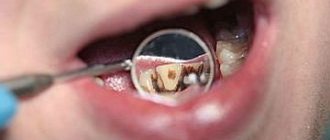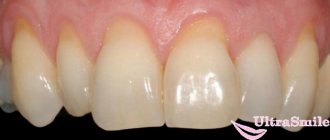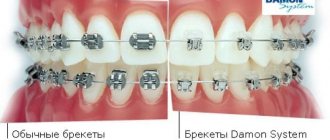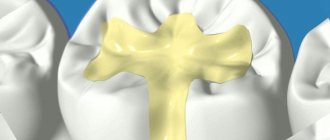New conditions for federal medical institutions
On January 1, 2022, a law came into force that transferred the insurer’s powers in relation to federal medical institutions (FMU) to the Federal Compulsory Health Insurance Fund (FFOMS).
Accordingly, monitoring the quality of medical care and protecting the rights of patients of federal-level medical organizations should have become the prerogative of the FFOMS. “However, according to the official website of the Unified Information System in the field of procurement, throughout this year, patients of federal medical institutions were left without planned quality control of the care provided to them by the FFOMS, since the examination of the quality of medical care in the FMU will begin only in 2022,” - noted in the VSS.
At the same time, the interests of patients of regional medical institutions (and this is the vast majority of hospitals and clinics) are still protected by the insurance companies that issued them compulsory medical insurance policies. According to the ARIA, from January to October 2022, insurance companies conducted 24.1 million examinations and identified 3.5 million violations by doctors. The vast majority of these relate to non-compliance with standards of care and clinical guidelines.
Insurance companies, on the direct instructions of the FFOMS, still continue to work with complaints from patients of federal clinics. However, as noted by the ARIA, the real possibilities of insurance companies to restore and protect the rights of patients of federal medical institutions are limited, since no agreement has been concluded between the FMU and insurance companies for the provision and payment of medical care.
Composition of the light seal
The vast majority of filling types are based on the use of a mixture of several materials. A filling made from a light-curing composite has a rather complex composition, which is partly why it costs more than its analogues.
Light seal materials
- Heliocomposite.
The basis of a light filling, which under the influence of an ultraviolet lamp breaks down into radicals, due to which polymerization (hardening) of the filling material occurs. - Filler.
This can be silicon dioxide, glass ceramics, etc. The structure, color and area of application of the filling depend on the type of filler. - Connecting elements.
In-depth medical examination after coronavirus
From July 1, 2022, those who have recovered from COVID-19 can undergo a free in-depth medical examination to identify possible “post-Covid” complications. First of all, patients with chronic diseases who have had a moderate or severe form of coronavirus infection are examined in depth. You can undergo an in-depth medical examination 60 days after the patient has recovered from COVID-19. At the same time, the VSS emphasizes that medical examination can also be completed on the initiative of the citizen himself.
As noted by Svetlana Kravchuk, deputy chairman of the Federal Compulsory Medical Insurance Fund, today, for some insurance companies, the response to an invitation to undergo medical examination has increased to 38% compared to 2% in the summer months.
You can sign up for an in-depth medical examination at the clinic at your place of residence or on the government services portal, the BCC reminded. If the clinic refuses to accept a patient, you can contact your insurance representative using the phone number of your insurance company (indicated on the compulsory medical insurance policy).
Kinds
Various types of fillings are used to repair holes and cracks. Their composition, purpose and service life differ.
By material
Patients of modern dental clinics can independently choose the compositions that the doctor will use for treatment or restoration. Filling material differs in strength, consistency, and hardening time. Which one to choose depends on the problem the person is addressing.
Cement
Just a few decades ago, this material had no alternative competitors. It was possible to place a cement filling on a tooth in any clinic, and its cost was minimal. They were made on the basis of phosphate and silicate powders, which hardened under the influence of a chemical reaction when mixed with liquid.
The dentist needs to work with such material quickly, and after filling the patient should not consume food or water for 2 hours. Advanced clinics refuse cement fillings - the material is characterized by low adhesion, even under a technically correctly installed filling, food debris can get in, and carious processes can continue to develop underneath it.
Plastic
A damaged tooth without a filling continues to rapidly deteriorate, posing a danger to neighboring units and the oral cavity. Some dentists suggest using plastic to eliminate the problem. Such fillings are characterized by rapid hardening, excellent strength, and chemical resistance.
However, it is worth noting the disadvantages of the material. Over time, the plastic filling decreases in size and sags, and may be irreversibly stained by bright drinks. This will lead to the need to quickly replace the insert, which is associated with additional financial expenses.
Note! Plastic fillings are slightly toxic.
Composite light-curing
Photopolymer fillings are ideal for dental treatment. It has a paste-like consistency, is easy for a doctor to work with, and the material hardens under the influence of a special ultraviolet lamp. A variety of shades allows you to choose the one that will best match the tone of your native enamel. Thanks to this, it is from photopolymer that fillings are placed on the front teeth. To add shine, the composite is sanded with fine abrasive attachments after installation.
Ceramic
In terms of its properties, ceramics are closest to natural enamel. It is not surprising that this material is often used for fillings. Dentists make special ceramic inlays based on an impression of a pre-treated molar. They completely replicate the anatomical features of the tooth, and after installation, the chewing load will be evenly distributed over the entire surface. Over time, ceramics do not change color, do not wear off, and do not shrink. The only disadvantage for the patient is how much a filling costs for a bad tooth.
Glass ionomer
This type of cement is often used in complex therapy against caries in children. They contain fluoride, which prevents recurrent caries. Since the material is quite fragile, a composite is usually applied on top of it - it is more aesthetically pleasing, resistant to abrasion and not subject to shrinkage.
By service life
Depending on the problem with the tooth, dentists offer the installation of 2 types of fillings.
Temporary
It is used for diagnostic purposes when the dentist needs to observe how a tooth responds to treatment. Installing a temporary tooth filling prevents medications from escaping and moisture and pieces of food from entering the open cavity. After a couple of days or months, the material is removed and the teeth are treated further.
Constant
This is a permanent element of the tooth. Installed for several years, good fillings made from quality materials can last up to 10 years without the need for replacement.
How teeth are filled
If caries has appeared, a piece of enamel has broken off, or an old filling has fallen out of a tooth, then a trip to the dentist is mandatory! The availability of modern equipment, fast-acting anesthetics and good materials makes the treatment completely painless and comfortable for the patient. Before filling, the doctor will assess the condition of the oral cavity, remove carious stains, and, if necessary, carry out additional treatment for pulpitis or periodontitis.
The filling is placed according to a single scheme:
- the cavity is disinfected;
- the cleaned cavity is dried;
- Antimicrobial pads are placed inside if necessary;
- the prepared cavity is filled with a filling mixture, it is formed and illuminated with a polymerization lamp;
- the frozen mass is polished.
Important! If the filling is placed correctly, then the patient can comfortably close his jaws.
The nuances of treating anterior teeth
Restoration of anterior teeth requires a special approach. There are special requirements for the material that is used to restore the surface of the visible part of the dentition. It must be immune to temperature changes, biocompatible with native enamel, durable, and able to withstand constant chewing loads. After cosmetic repairs with photopolymer or light fillings, the front teeth will look beautiful and healthy.
What to do with a wisdom tooth?
Eights today are considered to be a rudiment. If holes appear in these molars, then not every doctor undertakes to save the dental unit. Most often, they resort to extraction because it is unknown how the tooth will behave after treatment. Wisdom teeth are filled only in certain cases:
- if the nearest tooth is destroyed and the figure eight can be used to install a prosthesis;
- in the presence of an antagonist;
- with severe damage to the integrity of the dentition.
The procedure for treating wisdom teeth is no different from the standard one.
Automatic notification through government services
From July 1, 2022, information on medical care provided to the insured citizen and his minor children will be available on the Unified Portal of State and Municipal Services.
It will be possible to see in detail what kind of help and when a person received on an outpatient basis, in a day hospital, inpatiently, outside a medical organization. In addition, the citizen will receive full information about the cost of medical care provided to him under compulsory medical insurance, despite the fact that all services were free for him. The results of control and expert activities of the insurance company will also be available (information on the nature of violations in the provision of medical care).
As explained by VSS expert Sergei Shkitin, if there is a need for clarification of identified violations and if “additions” are discovered, a citizen can contact his insurance company.
How does a medical policy work when moving to another city?
The insurance certificate contains the citizen’s personal data, so any changes must be reported to the insurance company. If personal information does not match, the policy will have to be changed.
If you move to another city within the same region, you must:
- register at a local clinic by presenting a medical card and passport;
- put a mark on the insurance form in the QMS.
The insurance company must be notified of registration at a new address within 30 days, after which you can safely receive treatment from local doctors.
Digital policy
An important innovation in 2022 for citizens will be the opportunity to refuse a compulsory medical insurance policy on a tangible medium (plastic card or paper document) and receive a digital policy with a unique bar code. An electronic policy can be issued from July 1, 2022, for example, by submitting an application on the government services portal.
Information about insured citizens is located in a unified register of insured persons, which, starting from the second half of 2022, will make it possible to receive medical care without using a plastic or paper policy. To receive medical care, it will be enough to present any identification document or the digital compulsory medical insurance policy itself. This innovation will save patients from bureaucratic costs, for example, when a document is lost.
How is the filling installed?
The fixing of the restoration material always follows the same pattern:
- First, the doctor injects into the tissues located around the damaged area.
- When the medicine begins to act, the specialist cleans the cavity from the remains of dead tissue, darkened mineralized parts and dentin, and gives it the desired shape and depth.
- The doctor then examines the pulp. If the connective tissue is not damaged, the prepared area is treated with an antiseptic. If the pulp is in a state of inflammation, then the dentist removes it from the tooth cavity and then fills the canals.
- After the above manipulations, the cavity is dried. Then special antimicrobial and insulating gaskets are placed in it.
- At the final stage, filling is carried out. At the end of the operation, the installed material is ground for comfortable closure of the jaws and polished.
Change of insurance company
Now, when changing the region of residence or stay, if a citizen has not applied to choose a new insurance company, he will be insured by the same insurance company as before. If there is no branch of his previous insurance company in the region of his new place of residence, then the selection of a new company will be carried out randomly by the territorial compulsory medical insurance fund.
From 2024, the insured citizen will no longer have the obligation to report changes in any personal data to his insurance company - all updates will be automated. This is due to the fact that the necessary information about the citizen (change of full name, place of residence or temporary stay) will be regularly updated in the Unified Register of Population Information.
Shkitin recalled that choosing an insurance company still remains an important right of citizens, since the quality of customer service and expert control will depend on this in the future. In the vast majority of regions of Russia, you can choose a medical insurer from three or four,” Shkitin noted.
In what cases is it necessary to install a filling?
The installation of restorative material is carried out not only in the treatment of carious lesions. The procedure is also performed when:
- presence of chips and cracks;
- elimination of consequences after mechanical damage;
- intense loss of hard tissues, leading to almost complete wear of the upper part of the teeth (for example, due to involuntary grinding of the jaws).
It is worth noting that any dental clinic performs filling only in cases where the destruction of the coronal part is insignificant. If the surface of the tooth is damaged by more than a third, it is replaced with an artificial substitute - a prosthesis.
The use of modern materials helps restore the beauty of the smile and chewing function, and also prevents further destruction of the mineralized coating.
Which one is better to choose for the smile area?
If you are thinking about which option to choose for dental restoration, the best option in terms of price and quality is a light filling. It has a number of positive aspects:
- There is no need to wait two hours to eat and drink after a dental procedure.
- It is characterized by high strength and a longer service life. On average, a light filling lasts up to 7 years.
- Absolute safety for the body.
- It is possible to choose the color of the seal so that the restored unit does not differ from the rest.











